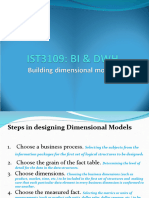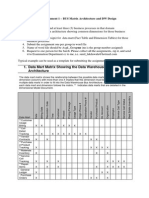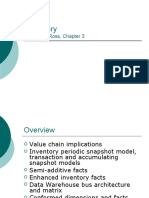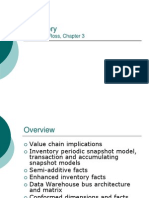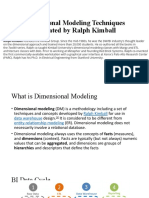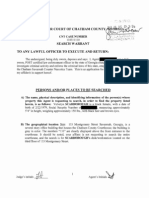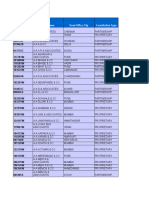0% found this document useful (0 votes)
41 views13 pagesDimensional Data Modeling - Lecture 4
The document discusses the matrix method for designing dimensional models. It involves 3 steps: 1) Listing facts such as sales, shipments and returns from requirements, 2) Listing dimensions such as customer, product and time, 3) Creating a matrix with facts as rows and dimensions as columns to define their relationships. The matrix helps choose what gets built first based on priority and simplicity. Dimensional tables are then designed by defining hierarchies and attributes like day, month and year.
Uploaded by
jhoncvivasCopyright
© © All Rights Reserved
We take content rights seriously. If you suspect this is your content, claim it here.
Available Formats
Download as PPT, PDF, TXT or read online on Scribd
0% found this document useful (0 votes)
41 views13 pagesDimensional Data Modeling - Lecture 4
The document discusses the matrix method for designing dimensional models. It involves 3 steps: 1) Listing facts such as sales, shipments and returns from requirements, 2) Listing dimensions such as customer, product and time, 3) Creating a matrix with facts as rows and dimensions as columns to define their relationships. The matrix helps choose what gets built first based on priority and simplicity. Dimensional tables are then designed by defining hierarchies and attributes like day, month and year.
Uploaded by
jhoncvivasCopyright
© © All Rights Reserved
We take content rights seriously. If you suspect this is your content, claim it here.
Available Formats
Download as PPT, PDF, TXT or read online on Scribd
/ 13




